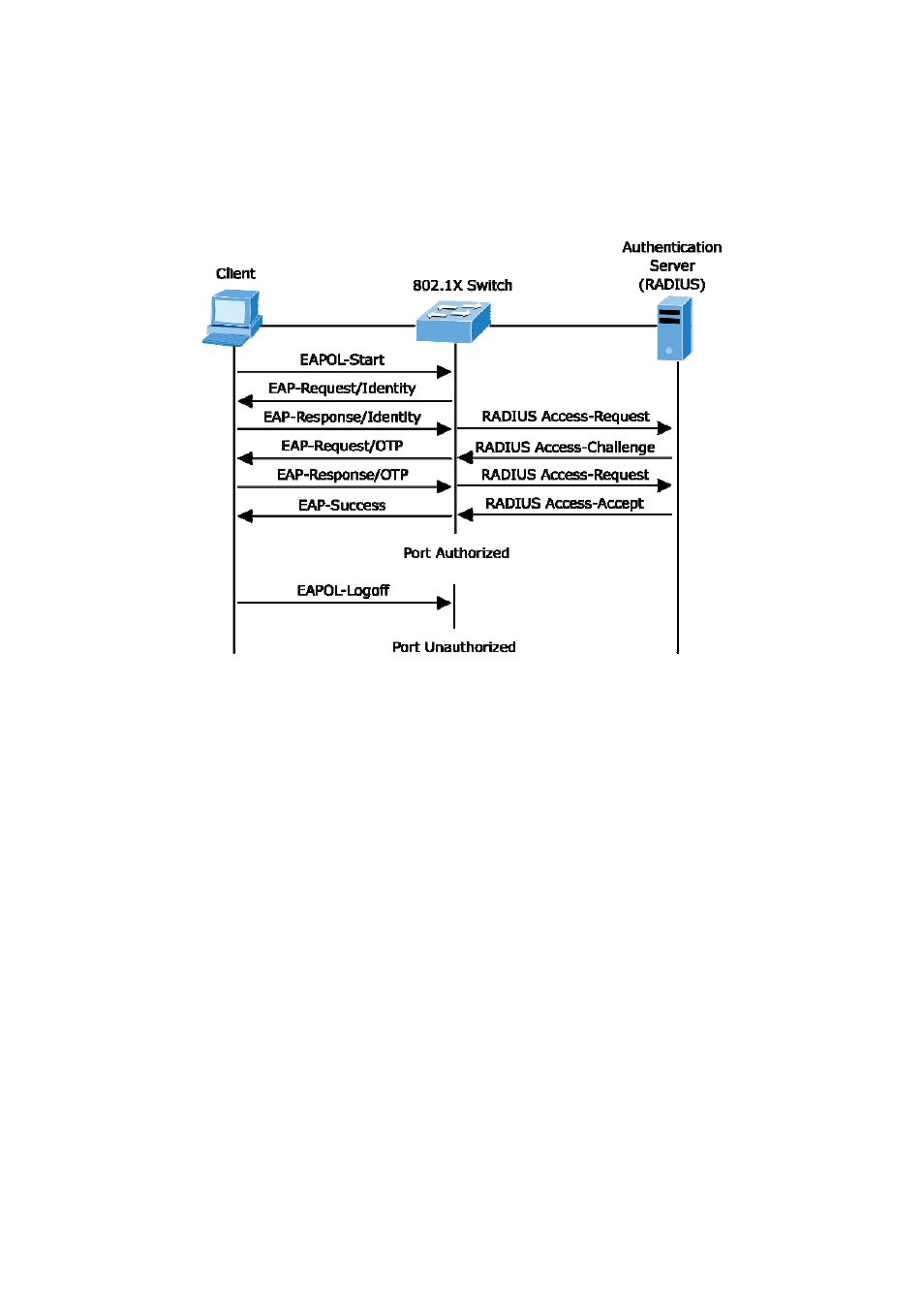PLANET ISW-1022MPT User Manual
Page 121

User’s Manual of ISW-1022M Series and ISW-1033MT
and the authentication server until authentication succeeds or fails. If the authentication succeeds, the switch port
becomes authorized.
The specific exchange of EAP frames depends on the authentication method being used. “
Figure 5-64
” shows a message
exchange initiated by the client using the One-Time-Password (OTP) authentication method with a RADIUS server.
Figure 5-64
EAP message exchange
Ports in Authorized and Unauthorized States
The switch port state determines whether or not the client is granted access to the network. The port starts in the
unauthorized
state. While in this state, the port disallows all ingress and egress traffic except for 802.1X protocol packets.
When a client is successfully authenticated, the port transitions to the authorized state, allowing all traffic for the client to
flow normally.
If a client that does not support 802.1X is connected to an unauthorized 802.1X port, the switch requests the client's
identity. In this situation, the client does not respond to the request, the port remains in the unauthorized state, and the
client is not granted access to the network.
In contrast, when an 802.1X-enabled client connects to a port that is not running the 802.1X protocol, the client initiates
the authentication process by sending the EAPOL-start frame. When no response is received, the client sends the request
for a fixed number of times. Because no response is received, the client begins sending frames as if the port is in the
authorized state
If the client is successfully authenticated (receives an Accept frame from the authentication server), the port state changes
to authorized, and all frames from the authenticated client are allowed through the port. If the authentication fails, the port
remains in the unauthorized state, but authentication can be retried. If the authentication server cannot be reached, the
121
